Much awaited Mulesoft 4 was officially announced in Mulesoft Connect 2018 in San Jose. When Mulesoft was born, it was really to create software that helps to interact systems or source of information quickly within or outside company. So the speed is an incredibly important thing over the years to develop and interact within systems. Need of speed for application and development hasn’t change drastically over the years but needs and requirement of customer’s application have changed. The integration landscape has also magnified. There are hundreds of new systems and sources of information to connect to, with more and more integration requirements. This integration landscape gets very messy and very quickly.
Mule 4 provides a simplified language, simplified runtime engine and ultimately reduces management complexity. It helps customers, developers to deliver application faster. Mule4 is really radically simplified development. It is providing new tool to simplify your development, deployment and management of your integration/API. It is also providing a platform to reuse Mule component without affecting existing application for faster development. Mule 4 is evolution of Mule3. You will not seem lost in Mule 4, if you are coming from Mule3. But Mule 4 implements fewer concepts and steps to simplify whole development/integration process. Mule 4 has now java skill is optional. In this release Mulesoft is improving tool and making error reporting more robust and platform independent.
Now let’s go one by one with all these new Mule4 features.
1. Simplified Event Processing and Messaging — Mule event is immutable, so every change to an instance of a Mule event results in the creation of a new instance. It contains the core information processed by the runtime. It travels through components inside your Mule app following the configured application logic. A Mule event is generated when a trigger (such as an HTTP request or a change to a database or file) reaches the Event source of a flow. This trigger could be an external event triggered by a resource that might be external to the Mule app.
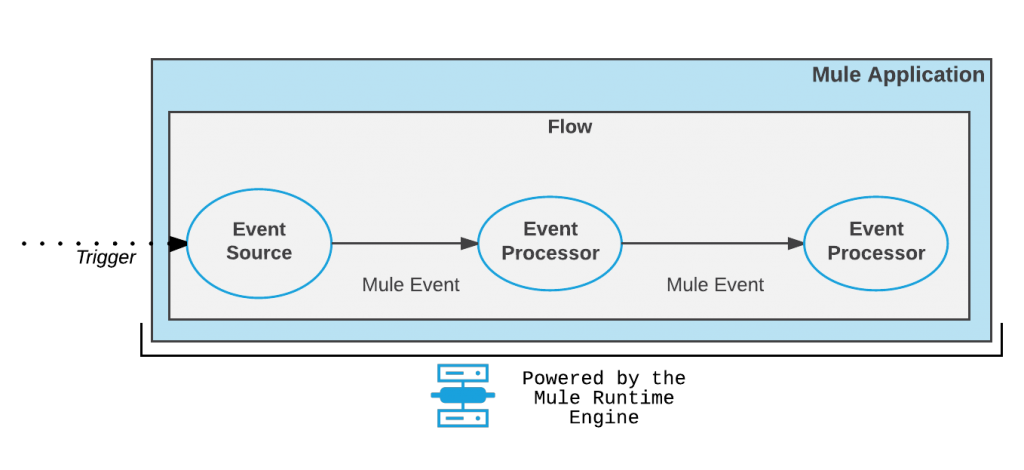
2. New Event and Message structure — Mule 4 includes a simplified Mule message model in which each Mule event has a message and variables associated with it. A Mule message is composed of a payload and its attributes (metadata, such as file size). Variables hold arbitrary user information such as operation results, auxiliary values, and so on.
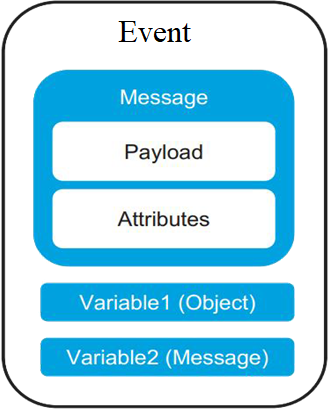
Mules 4 do not have Inbound, Outbound and Attachment properties like Mule 3. In mule 4 all information are saved in variables and attributes. Attributes in Mule 4 replace inbound properties. Attributes can be easily accessed through expressions.
These are advantages to use Attributes in Mule 4.
- They are strongly typed, so you can easily see what data is available.
- They can easily be stored in variables that you can access throughout your flow
#[attributes.uriParams.jobnumber]Outbound properties — Mule 4 has no concept for outbound properties like in Mule 3. So you can set status code response or header information in Mule 4 through Dataweave expression without introducing any side effects in the main flow.
Example:
<ee:transform xsi:schemaLocation="http://www.mulesoft.org/schema/mule/ee/core
http://www.mulesoft.org/schema/mule/ee/core/current/mule-ee.xsd">
<ee:message>
<ee:set-payload>
<![CDATA[
%dw 2.0
output application/json
---
{message: "Bad request"}]]>
</ee:set-payload>
</ee:message>
<ee:variables>
<ee:set-variable variableName="httpStatus">400</ee:set-variable>
</ee:variables>
</ee:transform>Session Properties –In Mule 4 Session properties are no longer exist. Data store in variables are passes along with different flow.
3. Seamless data access & streaming – Mule 4 has fewer concepts and steps. Now every steps and task of java language knowledge is optional. Mule 4 is not only leveraging DataWeave as a transformation language, but expression language as well. For example in Mule 3 XML/CSV data need to be converted into java object to parse or reroute them. Mule 4 gives the ability to parse or reroute through Dataweave expression without converting into java. These steps simplify your implementation without using java.
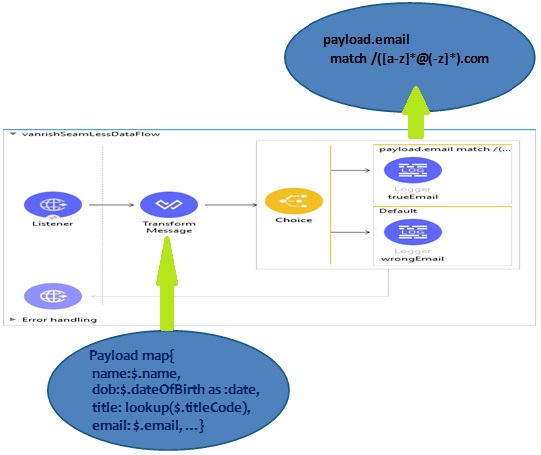
4. Dataweave 2.0 — Mule 4 introduces DataWeave as the default expression language replacing Mule Expression Language (MEL) with a scripting and transformation engine. It is combined with the built-in streaming capabilities; this change simplifies many common tasks. Mule 4 simplifies data iteration. DataWeave knows how to iterate a json array. You don’t even need to specify it is json. No need to use <json:json-to-object-transformer /> to convert data into java object.
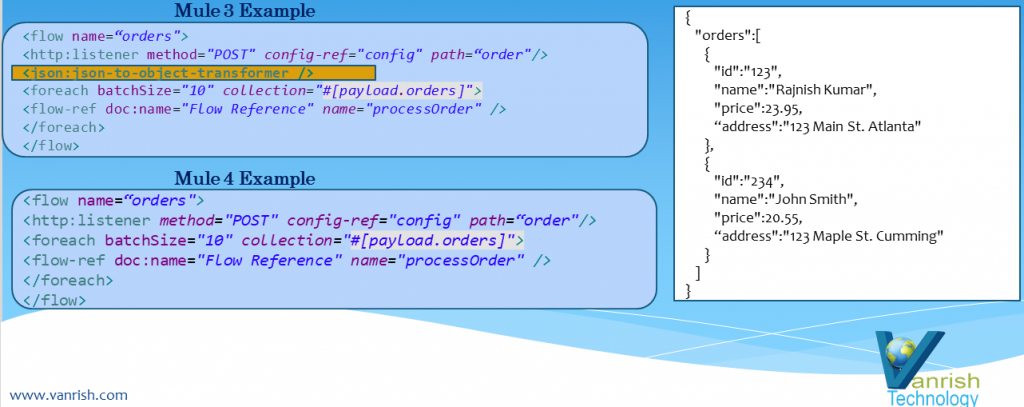
Here are few points about Dataweave 2.0
- Simpler syntax to learn
- Human readable descriptions of all data types
- Applies complex routing/filter rules.
- Easy access to payload data without the need for transformation.
- Performs any kind of data transformation, normalization, grouping, joins, pivoting and filtering.
5. Repeatable Streaming – Mule 4 introduces repeatable streams as its default framework for handling streams. To understand the changes introduced in Mule 4, it is necessary to understand how Mule3 data streams are consumed
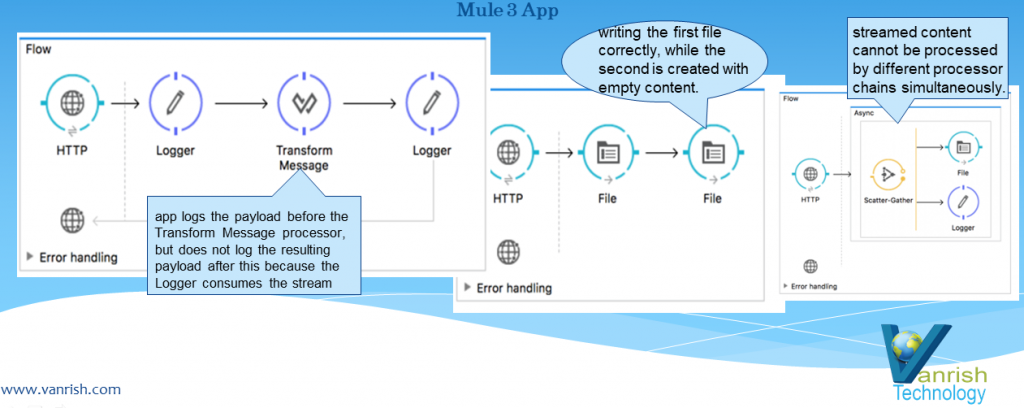
In above three different Mule 3 flows, once stream data is consumed by one node it is empty stream for 2nd node. So in the above first example, in order to log the stream payload , the logger has to consume the entire stream of data from HTTP connector. This means that the full content will be loaded into memory. So if the content is too big and you’re loading into memory, there is a good chance the application might run out of memory.
So Mule 4 repeatable streams enable you to
- Read a stream more than once
- Have concurrent access to the stream.
- Random Access
- Streams of bytes or streams of objects
As a component consumes the stream, Mule saves its content into a temporary buffer. The runtime then feeds the component from the temporary buffer, ensuring that each component receives the full stream, regardless of how much of the stream was already consumed by any prior component
Here are few points, how repeatable streams works in Mule 4
- Payload is read into memory as it is consumed
- If payload stream buffer size is > 512K (default) then it will be persisted to disk.
- Payload stream buffer size can be increased or decreased by configuration to optimize performance
- Any stream can be read at any random position, by any random thread concurrently
6. Error Handling — In Mule 4 error handling has been changed significantly. Now In mule 4 you can discover errors at design time with visual interface. You no need to deal with java exception directly and it is easy to discover error while you are building flow. Every flow listed all possible exception which potential arises during execution.
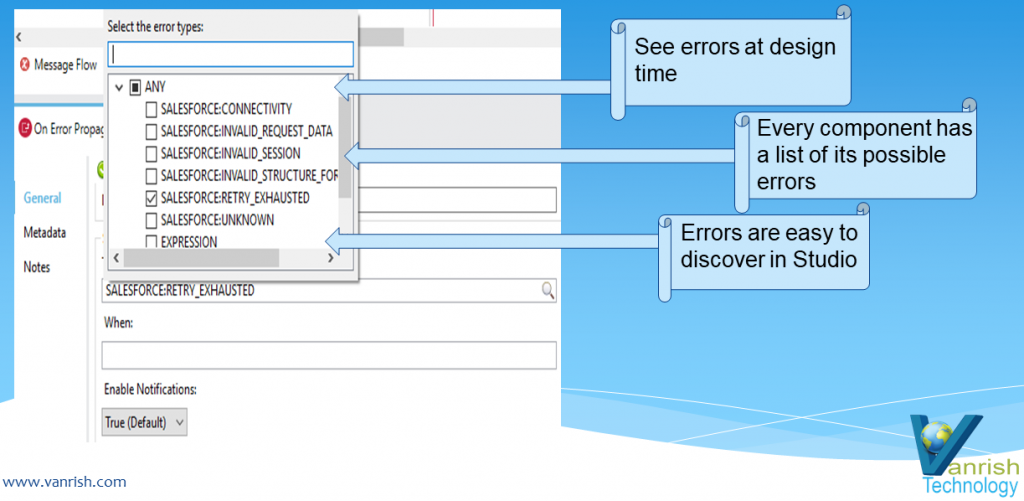
Now errors that occur in Mule fall into two categories
- Messaging errors
- System errors
Messaging errors — Mule throws a messaging error (a Mule error) whenever a problem occurs within a flow. To handle Mule errors, you can set up On Error components inside the scope-like Error Handler component. By default, any unhandled errors are logged and propagated.
System errors — Mule throws a system error when an exception occurs at the system level . If no Mule Event is involved, the errors are handled by a system error handler.
Try catch Scope — Mule 4 introduces a new try scope that you can use within a flow to do error handling of just inner components/connectors. This try scope also supports transactions and in this way it is replacing Old Mule 3 transaction scope.
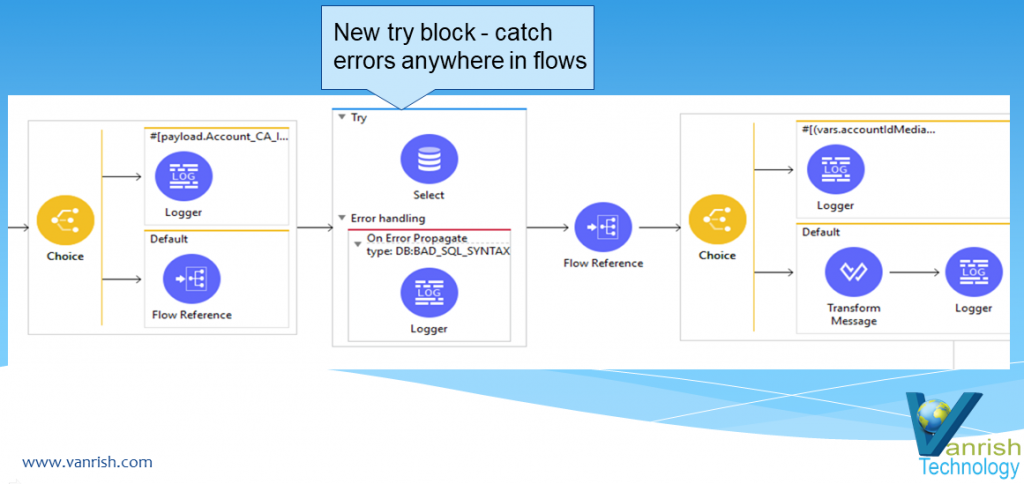
7. Class Loader Isolation — Class loader separates application completely from Mule runtime and connector runtime. So, library file changes (jar version) do not affect your application. This also gives flexibility to your application to run any Spring version without worry about Mulesoft spring version. Connectors are distributed outside the runtime as well, making it possible to get connector enhancements and fixes without having to upgrade the runtime or vice versa
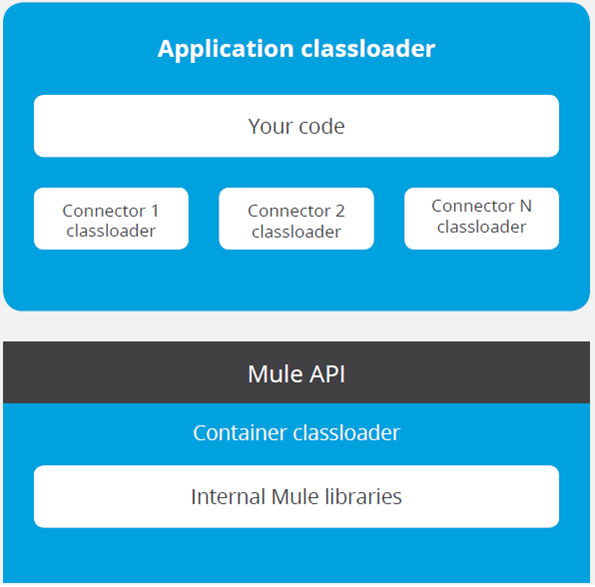
8. Runtime Engine — Mule 4 engine is new reactive and non-blocking engine. In Mule 4 non-blocking flow always on, so no processing strategy in flow. One best feature of Mule 4 engine is, It is self-tuning runtime engine. So what does this mean? If Mule 4 engine is processing your applications on 3 different thread pools, So runtime knows which application should be executed by each thread pool. So operation put in corresponding thread pool based on high intensive CPU processing or light intensive CPU processing or I/O operation. Then 3 pools are dynamic resizing automatically to execute application through self-tuning.
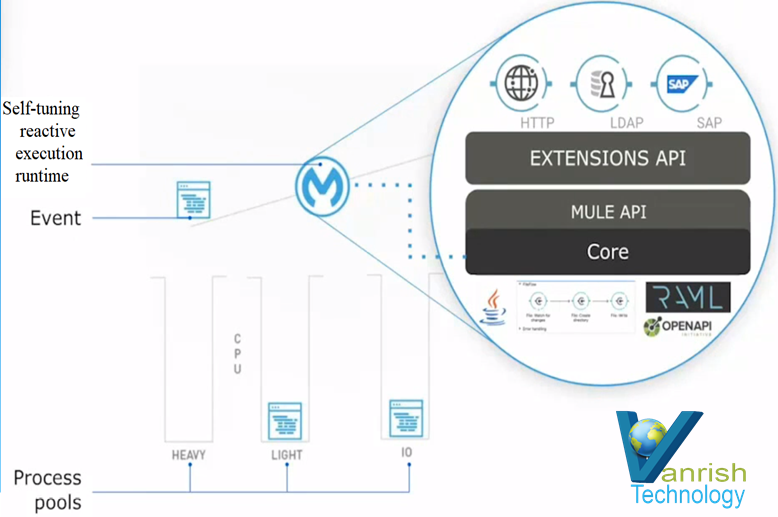
Mule 4 : Self tuning run time engine
So now self-tuning creates custom thread pools based on specific tasks. Mule 4 engine makes it possible to achieve optimal performance without having to do manual tuning steps.
Conclusion
Overall Mule 4 is trying to make application development easy, fast and robust. There are more features included in Mule 4 which I will try to cover in my next blog. I will also try to cover more in depth info in above topic of Mule 4. Please keep tuning for my next blog.
Rajnish Kumar, the CTO of Vanrish Technology, brings over 25 years of experience across various industries and technologies. He has been recognized with the “AI Advocate and MuleSoft Community Influencer Award” from the Salesforce/MuleSoft Community, showcasing his dedication to advancing technology. Rajnish is actively involved as a MuleSoft Mentor/Meetup leader, demonstrating his commitment to sharing knowledge and fostering growth in the tech community.
His passion for innovation shines through in his work, particularly in cutting-edge areas such as APIs, the Internet Of Things (IOT), Artificial Intelligence (AI) ecosystem, and Cybersecurity. Rajnish actively engages with audiences on platforms like Salesforce Dreamforce, World Tour, Podcasts, and other avenues, where he shares his insights and expertise to assist customers on their digital transformation journey.

